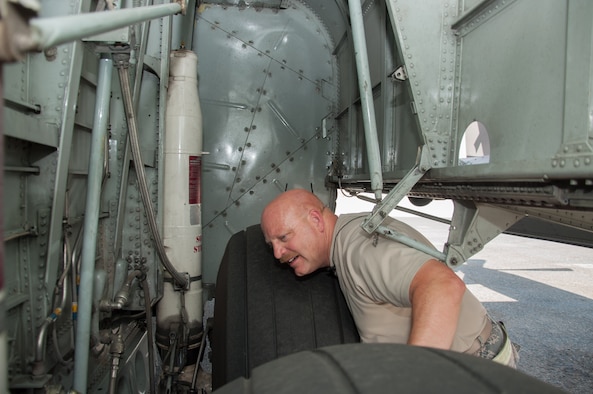By Master Sgt. Eric Sharman, 386th Air Expeditionary Wing
Public Affairs / Published September 04, 2017
SOUTHWEST ASIA (AFNS) -- (This feature is part of the
"Through Airmen's Eyes" series on AF.mil. These stories focus on a
single Airman, highlighting their Air Force story.)
Since entering active military service in 1956, the C-130
Hercules has earned its place in the storied history of air power, time and
time again. From Vietnam all the way up through Operation Inherent Resolve, the
C-130 has always made a name for itself by providing critical airlift.
For Master Sgt. Norbert Feist, a 386th Expeditionary
Aircraft Maintenance Squadron C-130H crew chief, one C-130 in particular has a
special place in his personal Air Force storybook.
Feist, a Minnesota Air National Guardsman deployed from the
133rd Airlift Wing, has worked on tail number 1004 for 21 of the 30 year he’s
been in service. He’s been the lead crew chief on that aircraft for the last 12
years.
“I’ve been with this aircraft since it was almost brand
new,” Feist said. “One guy did the factory acceptance inspections on it, and
I’ve been running it ever since. I definitely have a really good bond with her,
and I’m glad I never had to switch airplanes.”
As would be expected over the 21 years, Feist has developed
a sense of ownership and responsibility toward the airplane he’s spent more
than two-thirds of his career with. Not unlike an Airman with a long service
record, tail 1004 has its own personality quirks.
“The crew door has always been tough to open. It’s been tough
since it was new,” said Feist. “After so long, you get to know a plane, and the
little intricacies that come with it. And we always get the weird stuff, like
right now we are repairing a bird strike, when just a few years ago we hit one
in Yuma (Arizona). It flies really well for a while, and then something odd
like that happens.”
Regardless of random birds, stubborn doors, or other
oddities, tail 1004 has coincidentally been mission-ready when needed.
“I call it the bilge pump, because it’s always been there to
bail another plane out,” boasted Feist. “The minute it sits spare, I know that
another plane is going to have an issue, and mine will get called up. If it is
on alert status, it always seems to get called up to save the day.”
It’s that resilience that gives Feist a sense of pride in
his mission and his aircraft. Currently on his ninth deployment, Feist has a
keen understanding of the impact he and his aircraft have on the mission.
“Deployments are when you get to do the job that you’ve
trained for, and it’s a lot of work to keep these airplanes flying in these
austere conditions,” said Feist. “It’s either solid with people or solid with
pallets, and always at max weight between cargo, people and fuel. We’re at full
utilization, no doubt about it.”
The C-130 primarily performs the tactical portion of the
airlift mission. The aircraft is capable of operating from rough, dirt strips
and is the prime transport for airdropping troops and equipment into hostile
areas, according to the official Air Force fact sheet on the aircraft. This
versatility and demand take a toll on the time-tested but venerable aircraft.
“The mission over here is hauling beans, bullets and people.
We go up-country, and what we do is very important,” said Feist. “Our mission
is important because we are getting people to the fight, and we’re hauling the
materials that are required for the fight, so we’re definitely very much part
of the mission for sure.”

No comments:
Post a Comment